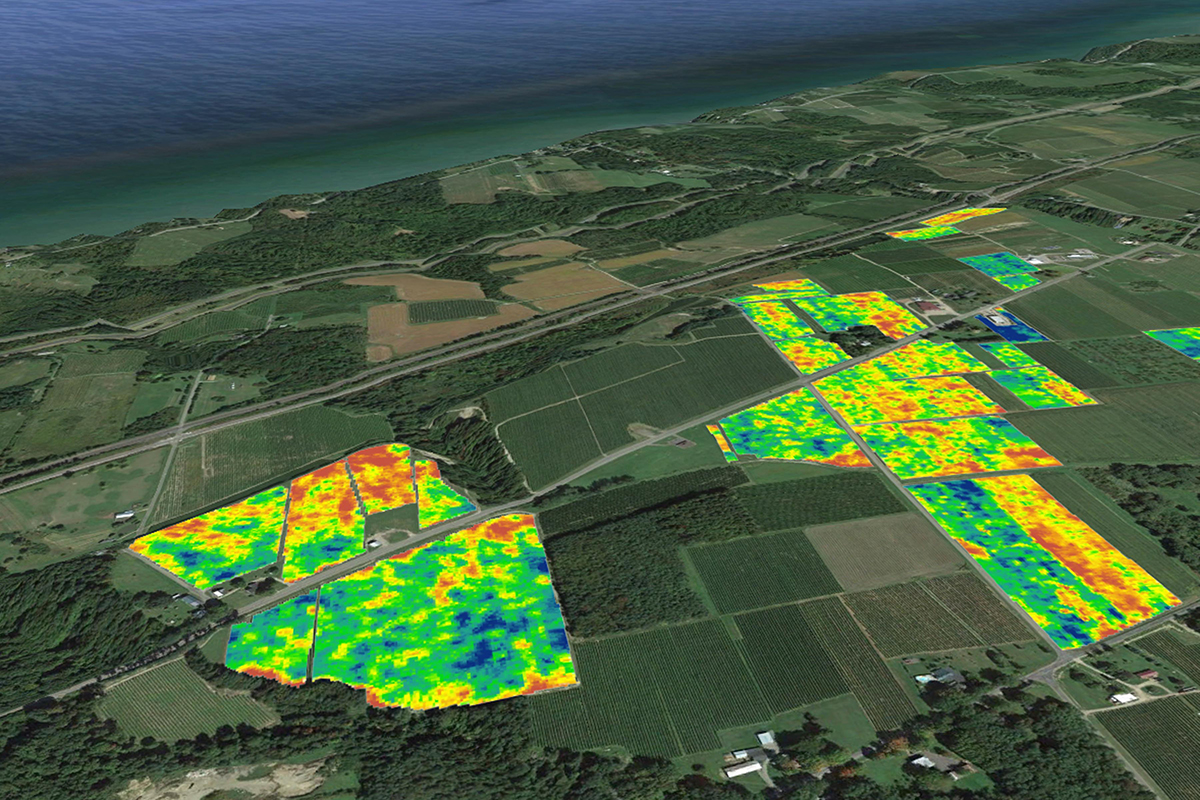Cornell grape research boosted by $6 million grant
By Matt Hayes

The ancient art of grape growing is getting a high-tech boost thanks to Cornell University research and a $6 million federal grant.
The grant money, part of the USDA’s Specialty Crop Research Initiative, will fund a four-year project to develop and implement digital mapping technology. The project aims to bring precision viticulture technology to growers of various scales, cultivating all grape species, with the potential to spur gains for the U.S juice, wine, raisin and table grape industries.
The project will be led led by Terry Bates, director of the Cornell Lake Erie Research and Extension Lab in the College of Agriculture and Life Sciences (CALS).
Project leaders plan to utilize a suite of mobile sensors that measure conditions related to the soil, canopy and crop. Software developed by the project team will crunch thousands of data points to produce digital maps layered with information detailing specific conditions.
With the maps, farmers and vineyard managers could get an unprecedented vantage point to compare sections within their vineyards. Armed with that information, growers will be able to address areas of weakest productivity and significantly enhance their ability to predict crop size, yield and quality across their entire vineyard.
Bates said that in the past even sophisticated growers have been unable to adequately determine vineyard health at a spatial level. By creating a visual representation of a vineyard, the new technology allows underperforming sections to be spotted, giving growers the information they need to make targeted approaches to decrease variability and increase productivity.
Bates said growers already have the tools needed to improve crop health, from fertilization to pruning techniques. Soon they will have data to pinpoint areas of lagging productivity and inform decisions on how best to deploy resources.
“Visually they start to see areas of their vineyard that are not producing as well, and where it’s costing them money,” said Bates. He said the mapping technology could increase yields by 20 percent while decreasing the productivity variability across sections by 30 percent.
The project is the top priority of the National Grape and Wine Initiative, a national, grower-led entity whose membership includes growers of all grape crops, spanning farms of all sizes in all grape-producing states. Cornell researchers are joined by Carnegie Mellon, Penn State, Newcastle University and the University of California, Davis on the nationwide project.
New York Sens. Chuck Schumer and Kirsten Gillibrand said the grant, paired with Cornell research, creates an opportunity to boost the state’s agricultural industry.
“We have cutting-edge agricultural research occurring at Cornell University and this grant through the USDA allows researchers to help farmers, producers and local businesses optimize each harvest of crops,” said Gillibrand, the first New York senator to serve on the Senate Agriculture Committee in nearly 40 years.
“New York produces a wide range of specialty crops, from fruits and vegetables, to maple syrup and Christmas trees. All of these crops rank highly nationwide in terms of both production and economic value, and I am proud to announce that this federal USDA funding will help bolster this industry by supporting research and development at Cornell University, as well as programs that aim to increase production and distribution tools for our farmers,” said Schumer.
Kathryn J. Boor, the Ronald P. Lynch Dean of CALS, said the project typifies the leading research by Cornell that has economic benefits across the U.S.
“On behalf of the College of Agriculture and Life Sciences, I would like to thank Senator Schumer and Senator Gillibrand for their support of this incredibly important initiative that will bolster New York’s juice and wine grape businesses by integrating new technology with existing practices for improved production efficiency,” said Boor. “This project is yet another example of the vital research and extension work initiated in New York that has nationwide impact on local food systems and regional economies.”
Matt Hayes is managing editor and social media officer for the College of Agriculture and Life Sciences.
Media Contact
Get Cornell news delivered right to your inbox.
Subscribe